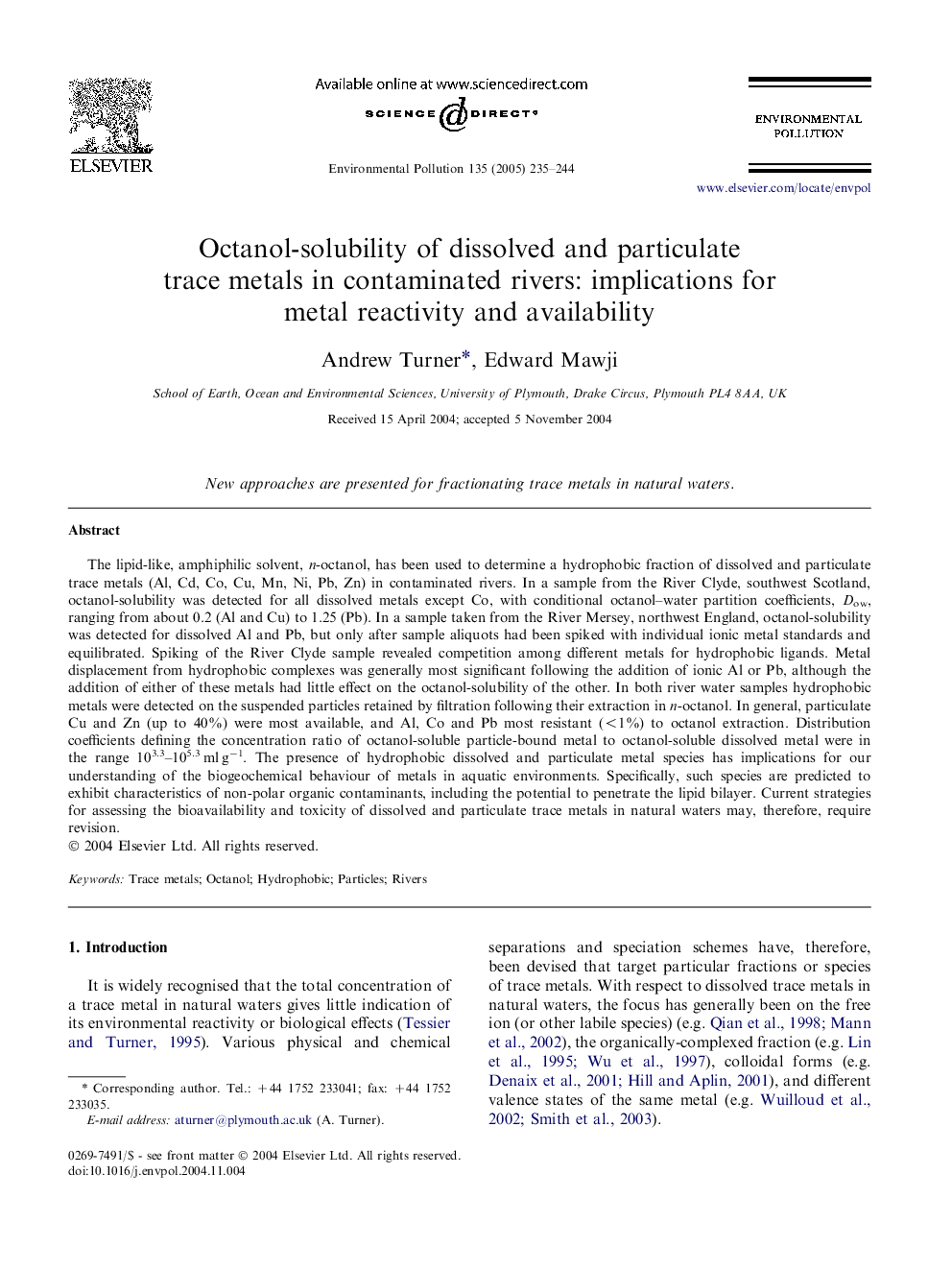| کد مقاله | کد نشریه | سال انتشار | مقاله انگلیسی | نسخه تمام متن |
|---|---|---|---|---|
| 9456534 | 1309201 | 2005 | 10 صفحه PDF | دانلود رایگان |
عنوان انگلیسی مقاله ISI
Octanol-solubility of dissolved and particulate trace metals in contaminated rivers: implications for metal reactivity and availability
دانلود مقاله + سفارش ترجمه
دانلود مقاله ISI انگلیسی
رایگان برای ایرانیان
کلمات کلیدی
موضوعات مرتبط
علوم زیستی و بیوفناوری
علوم محیط زیست
شیمی زیست محیطی
پیش نمایش صفحه اول مقاله

چکیده انگلیسی
The lipid-like, amphiphilic solvent, n-octanol, has been used to determine a hydrophobic fraction of dissolved and particulate trace metals (Al, Cd, Co, Cu, Mn, Ni, Pb, Zn) in contaminated rivers. In a sample from the River Clyde, southwest Scotland, octanol-solubility was detected for all dissolved metals except Co, with conditional octanol-water partition coefficients, Dow, ranging from about 0.2 (Al and Cu) to 1.25 (Pb). In a sample taken from the River Mersey, northwest England, octanol-solubility was detected for dissolved Al and Pb, but only after sample aliquots had been spiked with individual ionic metal standards and equilibrated. Spiking of the River Clyde sample revealed competition among different metals for hydrophobic ligands. Metal displacement from hydrophobic complexes was generally most significant following the addition of ionic Al or Pb, although the addition of either of these metals had little effect on the octanol-solubility of the other. In both river water samples hydrophobic metals were detected on the suspended particles retained by filtration following their extraction in n-octanol. In general, particulate Cu and Zn (up to 40%) were most available, and Al, Co and Pb most resistant (<1%) to octanol extraction. Distribution coefficients defining the concentration ratio of octanol-soluble particle-bound metal to octanol-soluble dissolved metal were in the range 103.3-105.3 ml gâ1. The presence of hydrophobic dissolved and particulate metal species has implications for our understanding of the biogeochemical behaviour of metals in aquatic environments. Specifically, such species are predicted to exhibit characteristics of non-polar organic contaminants, including the potential to penetrate the lipid bilayer. Current strategies for assessing the bioavailability and toxicity of dissolved and particulate trace metals in natural waters may, therefore, require revision.
ناشر
Database: Elsevier - ScienceDirect (ساینس دایرکت)
Journal: Environmental Pollution - Volume 135, Issue 2, May 2005, Pages 235-244
Journal: Environmental Pollution - Volume 135, Issue 2, May 2005, Pages 235-244
نویسندگان
Andrew Turner, Edward Mawji,